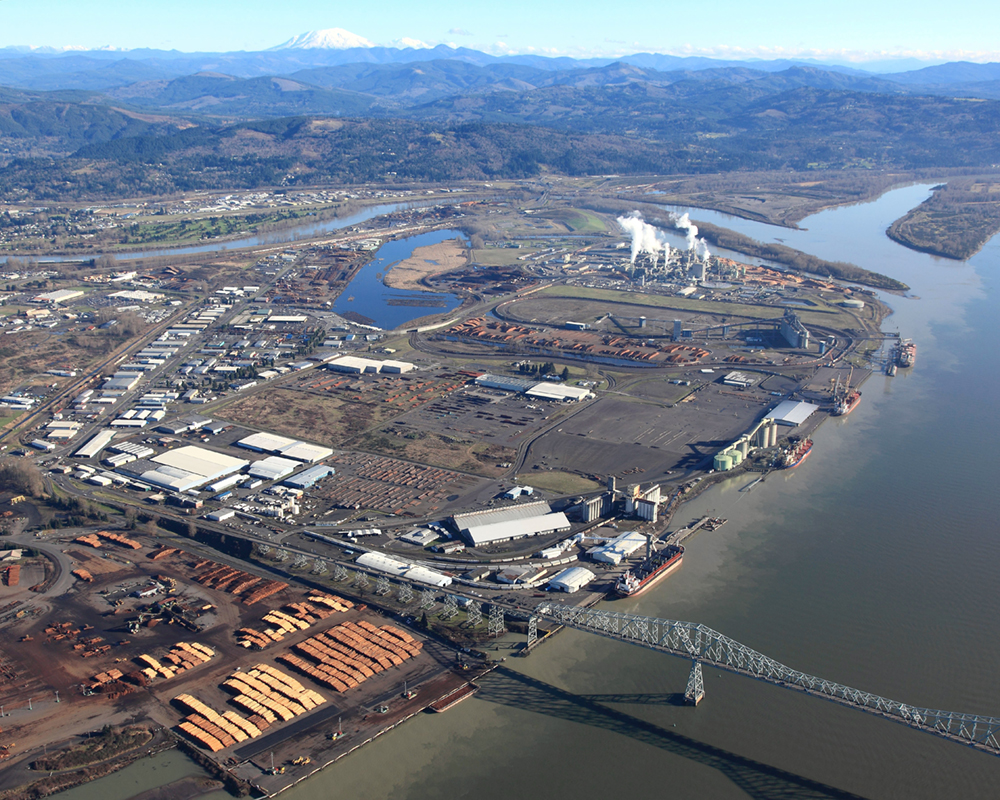
As bigger ships dominate goods movement, ports along the West Coast know that they must adapt to remain competitive.
For years, port officials have been working on various projects to make their ports more attractive to customers, whether it’s improving rail capabilities or building the infrastructure to make shore power possible.
But the COVID-19 pandemic hasn’t always made that easy. At the Port of San Diego, for example, funding had to be reduced for nine maritime infrastructure projects, pushing completion to a future fiscal year when the port’s revenues recover.
Still, ports continue to execute their big picture vision of future growth, knowing that they must be ready when the world fully emerges from the pandemic. Here’s a look at major infrastructure projects at some of the West Coast’s smaller and medium-sized ports.
Port of Coos Bay
The Oregon International Port of Coos Bay has wrapped up its Tunnel Rehabilitation Project, part of a years-long effort to rehabilitate the nine tunnels dotted along the 132-mile Coos Bay Rail Line.
With help from an $11 million federal grant and $8 million in state bonds, the port launched the project in August 2019 — which involved structural repairs and addressing drainage issues — and finished it that November. The port has been making ongoing improvements to the line to keep cargo flowing through the region and maintain a maritime shipping connection in the Coos Bay Harbor.
Meanwhile, the port also worked on a project to rebuild the Charleston Ice Plant after it was damaged in a major fire in December 2019. Over seven months, the port teamed up with contractors and community members to create a facility shaped by the local commercial fishing industry. That resulted in having flake ice available in the Charleston Marina and bolstering the ice making capacity from two to five tons per hour and storage capacity from 115 to 158 tons to help fishermen and women during the high seasons. Since opening, the added production has helped improve delivery times in the high seasons, the port said.
In February 2020, the port partnered with Lost Creek Rock Products to create a transload facility on the North Spit of the Coos Bay Harbor. The site allows customers seamless end-to-end solutions for multimodal and multi-commodity situations, according to the port.
“This facility has been a key connection which has supported job growth, enhanced economic vitality and reduced truck traffic on the coastal highways,” said port spokeswoman Margaret Barber. “One ton of freight can move more than 450 miles on a single gallon of diesel fuel by rail.”
Meanwhile, there are plans to repair and replace 15 steel bridges along the rail line, thanks to an award notice in December 2018 for a $20 million BUILD grant from the U.S. Department of Transportation. The work, which will be matched with a $5 million state grant, calls for rehabilitating all three swing span bridges along the line.
And in October, the port received a $10 million federal Port Infrastructure and Development Program grant to complete a comprehensive tie replacement and resurfacing program, work that will be critical in maximizing the rail line’s overall speed, safety and reliability.
As for other upcoming projects, the port has several on its docket, including an effort to partner with the U.S. Army Corps of Engineers to widen and deepen the navigational channel to accommodate larger cargo ships, a move to enhance the area’s global competitiveness. The project will expand the existing channel from minus-37 feet and 300 feet wide to minus-45 feet and 450 feet wide.
There’s also an effort to repair the North Jetty, work that’s vital in keeping mariners safe as they move in and out of Coos Bay harbor. In January, the port was told that the Army Corps of Engineers is including $34.65 million toward repairing the North Jetty in its 2021 work plan.
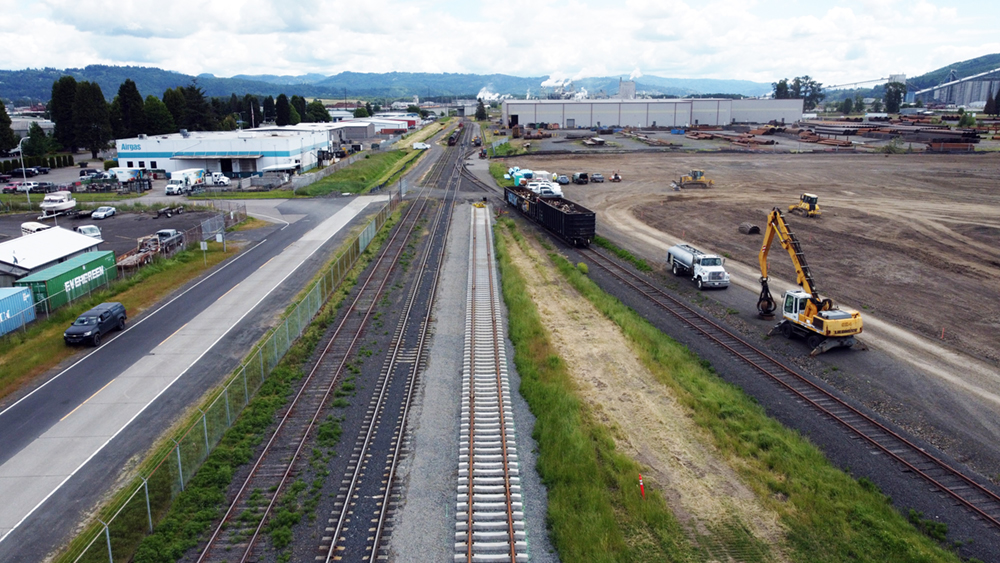
Port of Longview
This Southwest Washington seaport, which boasts 1,200 feet of on dock rail and three rail lines adjacent to the bull rail, is building upon those features with two major projects.
One project seeks to expand on the two-track Industrial Rail Corridor. Built by the port in 2004, the corridor created a direct connection between the marine terminals and BNSF Railway/ Union Pacific Class I mainline rail. A vehicular overpass and 3.2 miles of rail track were put in and three at grade crossings were removed to improve efficiency and safety.
Since then, the port has attracted multiple tenants, including EGT Grain Terminal, and cargo volumes at the port have soared nearly 600%, from 1.4 to 9.5 million metric tons, according to port spokeswoman Ashley Helenberg.
The expansion project, which is currently in the permit/engineering and property acquisition phase, calls for building a six-track rail bed adjacent to the existing corridor, adding two more 8,500-foot rail tracks and lengthening the current tracks from 7,500 feet to 8,500 feet to make room for growing unit train lengths. The port expects construction to begin in 2024.
“Building out the full rail bed at once prepares the port for future, long term growth and allows for expedited future expansion as cargo volumes and rail demand rises,” Helenberg said.
The second project currently underway involves the North Rail Connection, a critical link in the port’s internal rail system serving marine terminals and industrial tenants.
The $4.4 million project – anticipated to be finished later this year – will add 4,960 feet of new track and realign an existing 1,540 feet of track over to complete the link between the two more efficient areas in the system. This work will do away with congestion along the rail and boost overall rail capacity, including creating better cargo flow and railcar storage necessary for staging inbound/outbound rail traffic, according to the port.
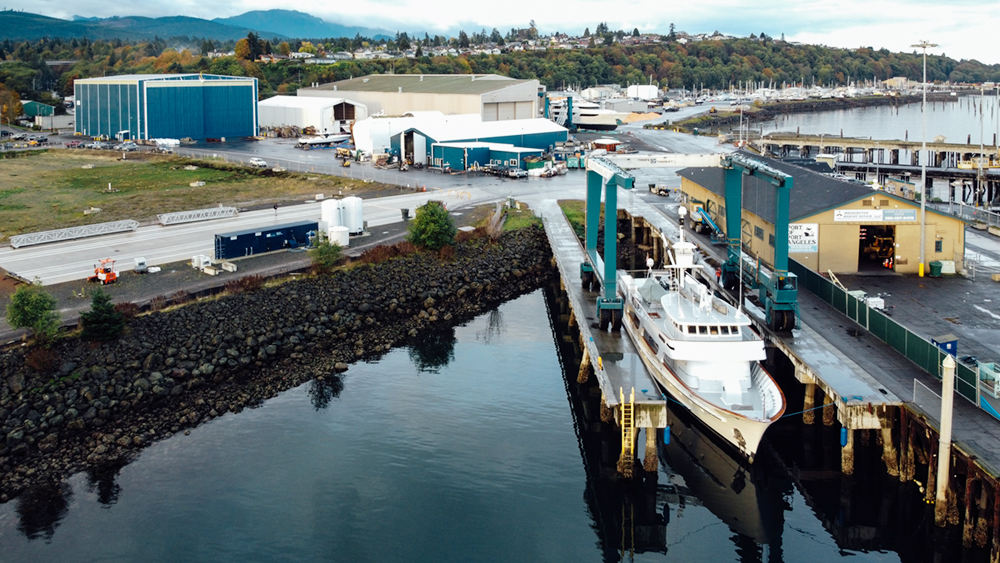
Port of Port Angeles
More than a decade ago this Washington state port, known for its longtime timber business, knew that it needed to diversify its portfolio to stay competitive and that the 18-acre former PenPly Mill property would be key to that effort.
“As anyone who is familiar with the economic history of the Olympic Peninsula can attest, the last 50 years has seen significant impacts to the timber industry that have had profound implications for the local economy,” according to a May 15 blog post by Chris Hartman, director of Engineering at the Port of Port Angeles and Wendell Johnson, principal planner at Reid Middleton, Inc.
That led to a years-long journey that involved the port partnering with the State Department of Ecology to clean up the property to prepare it for development and then choosing consultant Reid Middleton to create a master plan for a Marine Trades Center.
The result is a prime location on the Strait of Juan de Fuca that would be attractive to a spectrum of businesses that deal in marine trades.
The port, which touts itself as “a home to full-service boatyards with a complete range of repair services,” runs a pair of deep-water berths to accommodate repairs on large vessels and has 300-ton and a 500-ton heavy haul-out marine travel lifts.
The center features a boat wash facility with a 175-foot-long by 75-foot-wide wash pad and an 80-foot-long approach apron that was completed in 2018.
Meanwhile, the port is continuing to develop other parts of the master plan and seeking out matching funds to help pay for the infrastructure projects in the plan.
The port recently received a tentative award commitment from the regional Economic Development Authority with the condition that the port secure permits for a new stormwater outfall where much of the runoff created from the project would go into the bay. The port and its consultants are working on that effort.
“The port continues to move forward on a resilience path for the site, creating economic opportunities and environmental improvements, while incorporating the flexibility to adjust to future shocks,” said Hartman and Johnson.
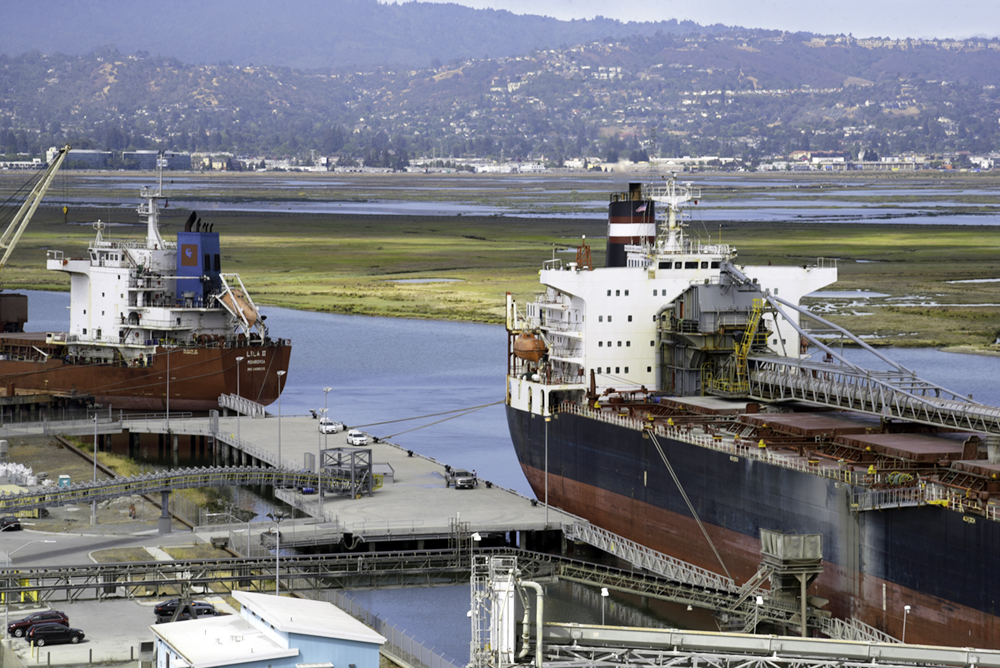
Port of Redwood City
The Port of Redwood City says it has been able to remain resilient during the pandemic, and continues to move forward on several infrastructure projects.
This Northern California port has been working to bolster security measures for the new $17 million wharf it built in 2017. The new wharf, which can withstand an 8.9 magnitude earthquake and accommodate three-to-five feet of sea level rise, got the attention of the federal government, which designated the port as a federal staging area in the event of an emergency.
Since then, the port has been successful in winning funds through the Port Security Grant program from the Department of Homeland Security, netting about $1.5 million in 2019 and about $1.2 million in 2020.
“What that’s allowing us to do is now add more infrastructure on top of what we’ve already done for security measures in the wharf,” port Executive Director Kristine Zortman said.
Enhancements, which are in the design and engineering phase, include installing a new facility for police and fire boats, a new pier facility and other landside services.
The port is also in the process of building an inter-agency operation center with state-of-the-art equipment. In conjunction with that, the grants are also supporting upgrades to the port’s overall cybersecurity, as well as strengthening some of the existing landside security, including upgrades to fencing, guard shacks, cameras and surveillance equipment. The money will also pay for new training to regional first responders.
The port is also planning to build a new public fishing pier this summer. The $2 million project would be able to accommodate sea level rise, be ADA compliant and stand as a new modern structure that will open up the waterfront, according to the port.
“We issued our request for interest, and that’s really for us to be able to see who wants to partner with us to do major infrastructure as it relates to activating the waterfront with destination type users, whether it’s a restaurant or a hotel or visitor serving, the types of uses that would really have a nice nexus along the water,” Zortman explained.
Meanwhile, the port is moving forward on a future ferry service that would link Redwood City to San Francisco and/or Oakland and offer Silicon Valley residents more mobility in the Bay Area. Earlier this year, the respective agencies approved and accepted the findings in a feasibility study, and say they hope to have a business plan completed by the end of this year.
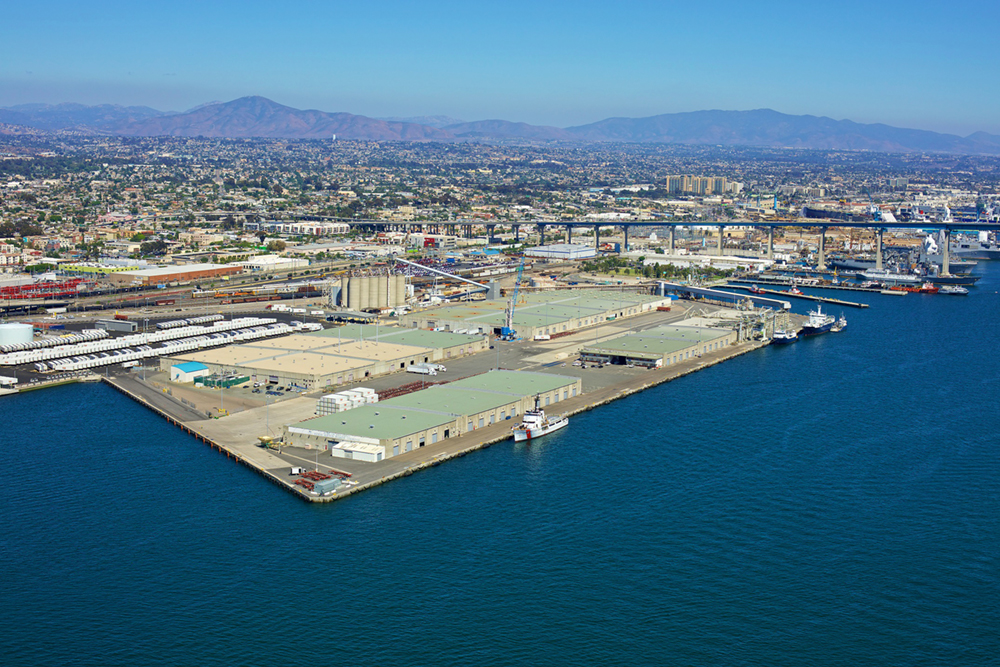
Port of San Diego
Despite the pandemic, the Port of San Diego has been able to complete several major infrastructure projects, including two on the Chula Vista Bayfront: the $5.4 million Sweetwater Bicycle Path and Promenade, and Sun Outdoors San Diego Bay, a new RV resort that opened in early May that features 197 RV sites, 49 vacation cottage rentals and amenities such as a café and bar, indoor/outdoor gym, arcade and pool with panoramic views.
In July 2020, the port and restaurant operator The Brigantine, Inc. finished the Portside Pier project on North Harbor Drive. The work involved building a new over-the-water platform, supporting piles, a new, two-story restaurant structure, a public dock and dine facility, a second level perimeter walkway, and a viewing deck with tables and seating for up to 108 visitors.
Last summer, the port finished the first phase of its Tenth Avenue Marine Terminal modernization project, which involved removing two obsolete warehouses, making laydown space for project cargo like windmill components and making improvements on its on-dock rail, utilities and a stormwater treatment system that was developed to maximize stormwater capture at the terminal.
For future phases of the Tenth Avenue Redevelopment Plan, the port plans to make a number of improvements, which include bolstering its consolidated dry bulk storage and heavy lift capacity, enhancing the existing conveyor system, refurbishing the existing molasses tanks, demolishing a warehouse and adding more storage space.

The port is also looking to install a microgrid, battery storage system, and electrical infrastructure at the Tenth Avenue Marine Terminal, officials say.
Construction is expected to start this year on the microgrid, which will be able to give backup power to port facilities, including security infrastructure, lights, offices, and the existing jet fuel storage system. The project is expected to help lower carbon dioxide by about 360 metric tons from the port’s baseline for electric energy consumption.
The port also plans to double shore power capability at its B Street and Broadway Pier cruise ship terminals in an effort to lower greenhouse gas emissions on and around San Diego Bay. In April, port commissioners approved $4.6 million for the project, which involves buying, building and putting in additional shore power equipment so two cruise ships coming to San Diego can plug in simultaneously.
The port has said that it hopes to finish the project by September 2022, before new California Air Resources Board rules mandates cruise ships to use shore power starting Jan. 1.
